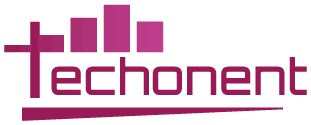
You hear a lot about emotional intelligence — especially in leadership circles. But it’s one thing to know the term and another to actually see it in action, particularly in a fast-paced development team under pressure.
For a long time, EQ wasn’t really something people associated with developers. It was more of a “bonus skill,” like something that might help you in client meetings or during performance reviews, but not part of the day-to-day. That thinking has shifted. The best tech teams today know that emotional intelligence isn’t just about being nice — it’s about understanding people, managing stress, and knowing how to respond when things don’t go as planned.
So what does that look like? Lumenalta’s latest whitepaper dives into exactly that — not in vague terms, but with real-world, research-backed insights on how emotional intelligence plays out across technical teams.
Before we jump into the examples, it’s worth stepping back for a second. Emotional intelligence is basically about reading the room — and yourself. It’s knowing when to push, when to listen, and how to handle a tough moment without derailing the project or the people around you. For developers and engineers, it shows up in how you take feedback, how you explain ideas to non-technical folks, and how you work through disagreements when stakes are high.
Real-World Examples from Lumenalta’s Whitepaper
One of the standout elements of Lumenalta’s examples of emotional intelligence in the workplace is how EQ shows up in ways that drive real business outcomes — not just nicer meetings.
Here are a few examples pulled straight from their research:
1. Recognizing Personal Triggers to Improve Team Dynamics
A senior developer working on a small, fast-moving team found themselves frustrated again and again with colleagues who didn’t “think ahead” the way they did. Through structured coaching, the developer realized they were projecting their own overthinking tendencies onto the team — expecting others to anticipate problems several steps ahead when they hadn’t been given that context.
Once they recognized this blind spot, everything shifted. Instead of micromanaging or criticizing, they started asking better questions and offering context up front. The result? Less tension, fewer bottlenecks, and a team that moved faster together.
2. Turning Unintentional Negativity into Constructive Collaboration
Another developer shared that their direct communication style often caused unnecessary friction. They weren’t trying to upset anyone — they simply didn’t realize how their words landed under pressure. EQ training helped them recognize how tone, timing, and empathy could change the entire trajectory of a conversation.
After making a few small changes, they found that collaboration became easier, team meetings were shorter, and people felt more willing to surface concerns early — before they became problems.
These aren’t big sweeping reforms. They’re small course corrections with a massive impact on trust, cohesion, and delivery speed.
Why These EQ Moments Matter
If you work in tech, you already know that even tiny delays, miscommunications, or morale dips can compound fast — especially when projects are running on tight deadlines.
Lumenalta’s research makes it clear: emotional intelligence isn’t a bonus anymore. It’s foundational.
Their survey showed:
- 87% of IT leaders said EQ improves client satisfaction.
- 81% said it helps teams adopt new technologies more effectively.
- 40% pointed directly to low EQ as a major cause of workplace challenges.
When developers and managers show emotional intelligence, projects run smoother, client relationships stay stronger, and teams stay healthier. And in an industry where burnout and turnover are constant risks, that edge matters more than ever.
How to Build Emotional Intelligence Into Your Team
So what’s the next step for companies that want more of these high-impact EQ moments on their teams?
Here’s what Lumenalta’s approach highlights — and what other successful organizations are embracing:
● Start at the top. Leaders set the emotional tone. If your leadership team practices vulnerability, gives clear feedback, and genuinely listens, your teams will too.
● Coach and mentor consistently. Regular coaching sessions — even informal ones — help developers and managers reflect on how their behavior affects others.
● Make EQ part of hiring and performance reviews. Don’t just ask about technical skills. Ask candidates about how they’ve handled conflicts, navigated team challenges, or built trust in previous roles.
● Encourage feedback loops. Teams that are open about what’s working (and what’s not) build resilience faster than teams that avoid hard conversations.
Most importantly, creating a culture that rewards emotional intelligence doesn’t mean avoiding tough conversations. It means having them skillfully — with the goal of making the team stronger, not just pushing work across the line.
Final Thought
In the end, emotional intelligence isn’t just about being easy to work with. It’s about accelerating success — by building trust, improving communication, and clearing the path for real innovation.
Lumenalta’s deep dive into EQ in the tech workplace shows that even in the most technical environments, people skills aren’t a nice extra. They’re the engine that keeps everything running.
If your team is aiming to move faster, solve bigger problems, and work better under pressure, there’s no better place to start than by building a culture where emotional intelligence is seen, practiced, and celebrated every day.

